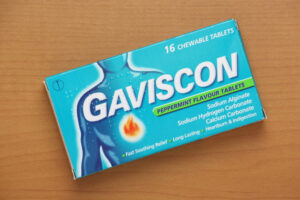The food industry has been adding chemicals to its products for decades to make them more addicting, and it’s killing us. Every day, the average person eats unfathomable amounts of artificial sweeteners without knowing what they do to their bodies. These five sneaky food ingredients are just a few of the many things you can buy at your local grocery store, like diet soda and soup packets, that will slowly kill your brain cells.
MSG (Mono-Sodium Glutamate)
 So, what is MSG and why should you try to stay away from it? Monosodium glutamate one of the five sneaky food ingredients that head my list, is a flavor enhancer made from processed wheat gluten, corn starch, and salt. It has been used in Asian cooking for hundreds of years to give dishes a savory taste. But MSG has a bad name because many health problems have been linked to it.
So, what is MSG and why should you try to stay away from it? Monosodium glutamate one of the five sneaky food ingredients that head my list, is a flavor enhancer made from processed wheat gluten, corn starch, and salt. It has been used in Asian cooking for hundreds of years to give dishes a savory taste. But MSG has a bad name because many health problems have been linked to it.
Brain fog, depression, migraines, obesity, type II diabetes, and heart disease are some of the most common side effects of MSG. MSG can sometimes even kill people. In the US and UK, for example, a batch of monosodium glutamate killed 19 people and hurt almost 200 more in 1968.
Monosodium glutamate is found in a lot of processed foods, like soups in a can, salad dressings, and frozen dinners. It’s added to food to make it taste better when the natural flavor has been taken out during processing. But most of these foods don’t need MSG because they are cooked with saturated fats and salt, which give them a savory taste on their own.
So, why is MSG in so many packaged foods? It doesn’t cost much and makes food taste better. Food companies put MSG in their products because they know it makes you want to eat more. The average person eats about three times as much processed food as they should, and a lot of that food has MSG in it.
To avoid MSG, carefully read the list of ingredients on packaged foods. Monosodium glutamate is listed as “monosodium glutamate,” “flavor enhancer,” or “seasoning.” You can also look for items that say “MSG-free” on them. The FDA lets food companies list a product as “MSG-free” if it has less than 0.02% monosodium glutamate. This doesn’t mean that the product is completely free of MSG, though.
If you can, try to avoid processed foods, and if you do buy them, read the ingredient lists carefully because they often have MSG hidden in them.
Aspartame
Aspartame has been around since the early 1980s, and it is one of the most commonly used sugar substitutes. It’s in everything from diet drinks to chewing gum, but some studies say it’s bad for your health. But other research has shown that there’s nothing to worry about. What should you make of all the different results?
Here’s what we know, though.
Aspartame is a sugar replacement that was made for the first time in the early 1970s. But Aspartame’s popularity didn’t really take off until 1985, when Donald Rumsfeld became the CEO of G.D. Searle & Company.
Rumsfeld really wanted the FDA to approve Aspartame, so he used his political connections to get it done. Even Donald Kennedy, who was President of the FDA at the time, was put on the board of directors for G.D. Searle & Company by Rumsfeld.
In 1981, the FDA finally gave its OK to Aspartame, and it has been a popular sugar substitute ever since. Some people think that Aspartame is dangerous, but most scientific studies show that it is safe for people to eat. Aspartame is a great example of why it’s important to read labels that say what’s in a food. As you’ll see below, Aspartame has been linked to health problems like cancer and neurological diseases. As with many food additives, no one knows yet what the long-term effects of aspartame are.
Aspartame is made up of three parts, which are aspartic acid, phenylalanine, and methanol. Aspartic acid is an amino acid that is found in meat, milk, and eggs. It is also found in our bodies. Aspartame is used in many foods because it is about 200 times sweeter than sugar. People have said that aspartame has a bitter aftertaste, so companies often mix it with saccharin or other artificial sweeteners to hide the taste.
In 1983, the FDA first said that Aspartame could be used in carbonated drinks. Aspartame was given the green light for use in other drinks, baked goods, and sweets. Aspartame has since been linked to a number of health problems, such as cancer, neurological diseases, brain tumors, diabetes, and emotional disorders like depression and anxiety attacks. The FDA requires companies that make Aspartame to put a warning on their products saying that it has been linked to brain tumors and that pregnant women should stay away from it because of this.
Aspartic acid is not an essential amino acid, but too much of it can be harmful. As you probably already know, our bodies make Aspartic Acid, but we can also get it from the food we eat. Aspartame is made from Aspartic Acid, which doesn’t exist in nature. Our bodies don’t know how to handle it. When the body breaks down aspartame, it gives off methanol, which the body then turns into formaldehyde. Formaldehyde is a known carcinogen, which means that it can cause cancer and diseases of the nervous system. Aspartic acid has also been linked to emotional problems like depression and panic attacks.
Still, scientists can’t agree on whether Aspartame causes these issues or makes them worse in some people.
In an article from The Huffington Post, it is said that Aspartame is the main cause of complaints to the FDA about side effects. Aspartame is also the food additive that makes people sick the most often.
Aspartame has only been on the market for a few decades, so we still don’t know what its long-term effects are.
Sucralose
 A few studies have shown that Sucralose can affect how well your brain works and how well you remember things. One study found that rats given Sucralose had trouble learning and remembering how to move around. In another study, it was found that Sucralose could change how the brain works. If Sucralose can have this effect on the brain, it’s likely that it would have the same effect on humans.
A few studies have shown that Sucralose can affect how well your brain works and how well you remember things. One study found that rats given Sucralose had trouble learning and remembering how to move around. In another study, it was found that Sucralose could change how the brain works. If Sucralose can have this effect on the brain, it’s likely that it would have the same effect on humans.
Sucralose was found in 1976 by a graduate student who was working for the company Tate & Lyle PLC to make new insecticides. Still, her discovery was quickly rendered useless because it was too sweet to be approved as an insecticide. Instead, this artificial sweetener started to be used as a food additive, and Canada was the first country to approve its use.
Sucralose started to be sold all over the world, including the US, in 1991, after many years of research and testing on animals like rats and rabbits. It came with a warning label about how it could cause cancer. In the 1990s, Tate & Lyle PLC was sued many times because their products, like Sucralose, hurt people who used them.
Tate & Lyle PLC sold Splenda and its global sucralose business to Johnson & Johnson subsidiary McNeil Nutritionals for $440 million in 2000. They did this even though tests on animals showed that Sucralose caused their thymus glands to shrink and their livers and kidneys to grow.
In 2013, the European Food Safety Authority (EFSA) re-evaluated Sucralose and found that it was still safe to use as an artificial sweetener, even though they couldn’t say for sure that it didn’t cause cancer. The FDA disagreed with the EFSA’s findings and kept saying that Sucralose was safe to use in food, even though it has been shown to shrink thymus glands, cause an enlarged liver and kidneys, change reproduction, cause genetic changes (mutations), which can lead to cancer, and change the bacteria in the gut [1].
Tate & Lyle’s marketing department thought it would be a good idea to say in their ads that Splenda is “Made from sugar, so it tastes like sugar.” This makes sucralose very sneaky. They were later sued by the people who made Equal, and the tagline had to be taken down. It may start out as sugar, but when chlorine is added to the sugar molecule, it changes into something very dangerous. Sucralose is also called Trichlorogalactosucrose, Trichlorosucrose, and NatraTaste Gold, among other names.
Diacetyl
 Do you know what gives your favorite microwave popcorn that buttery, creamy taste? Diacetyl. As a food additive, diacetyl gives all snacks and treats a delicious taste. But you might not know that Diacetyl is also in a lot of other foods that you eat every day.
Do you know what gives your favorite microwave popcorn that buttery, creamy taste? Diacetyl. As a food additive, diacetyl gives all snacks and treats a delicious taste. But you might not know that Diacetyl is also in a lot of other foods that you eat every day.
Diacetyl is made naturally in food when it ferments or when it is cooked. Diacetyl is found in dairy, fermented soy sauce and vinegar, potatoes, bread crusts, tortilla chips, and other foods.
Diacetyl is a lung poison that has been added to microwave popcorn for years because it gives the popcorn a buttery taste without adding extra calories. During fermentation, diacetyl is also made naturally. Diacetyl has been linked to a rare disease called bronchiolitis obliterans, which is also called “popcorn lung” because it affects the smallest airways in the lungs and makes them scarred and hard to breathe through. In recent years, Diacetyl has been linked to a number of health concerns, such as the fact that it can pass through the barrier between the blood and the brain.
Diacetyl may also be linked to Alzheimer’s disease, according to some research. A study published in the ACS journal Chemical Research in Toxicology[3] found that mice whose brains were exposed to Diacetyl had beta-amyloid plaques and neurofibrillary tangles. Both of these are classic signs of Alzheimer’s disease. The study found that Diacetyl exposure led to more oxidative stress and inflammation in the brain, which may contribute to the development of Alzheimer’s disease.
Diacetyl can also cause breathing problems like asthma and bronchitis in people who are prone to them. Diacetyl exposure has been linked to lymphocytic choriomeningitis, or LCMV infection, which is a rare autoimmune disease that hurts the immune system and lungs. More research is needed to find out if Diacetyl exposure makes people more likely to get Alzheimer’s disease. I wouldn’t eat microwave popcorn while watching Netflix and chilling out.
Aluminum
 Aluminum is a metal that can be found in many things we use every day, like cookware, foil, and antacids. It is also used to make vaccines and other kinds of medicine. Aluminum in small amounts is generally thought to be safe, but some experts believe it can hurt the brain.
Aluminum is a metal that can be found in many things we use every day, like cookware, foil, and antacids. It is also used to make vaccines and other kinds of medicine. Aluminum in small amounts is generally thought to be safe, but some experts believe it can hurt the brain.
One of the main worries about aluminum is that over time, it can build up in the brain. Aluminum can hurt nerve cells in the brain because it is a neurotoxin. Studies have shown that Aluminum can cause inflammation and lead to Alzheimer’s disease or other neurological diseases[4].
Aluminum is linked to Alzheimer’s disease because it has been found in the brains of many people who died from the disease. Aluminum acts as a catalyst for free radicals, which speeds up their production. This causes oxidative stress on cells, which can damage and kill cells.
Aluminum can be found in the body by taking a blood sample, a urine sample, or a hair sample. Aluminum is naturally found in water, but too much use of aluminum salts as coagulants to clean water has caused aluminum to build up in the soil. Aluminum can also be found in some foods, cooking tools made of aluminum, aluminum supplements, and some medicines, like antacids or drugs that treat ulcers. Pesticides, insecticides, and fungicides, all of which contain aluminum compounds, have been found to be other sources of aluminum.
Aluminum has also been linked to autism, ADD/ADHD, chronic fatigue syndrome, problems with reproduction, osteoporosis, and broken bones.
Read ingredient lists
Every day, it seems, there are more and more things that can kill your brain. There are always new studies saying that this or that ingredient is bad for the human body and makes us fat, sick, depressed, addicted, etc. But how can you keep yourself safe?
Read ingredient lists carefully and try to avoid artificial ingredients and chemicals as much as possible. This means avoiding processed foods that are made to taste good as much as possible. If you take care of your brain now, you will be less likely to get sick in the future. Read more about protecting your brain at: 7 Reasons to be Consuming Coconut Oil You May Not Know

